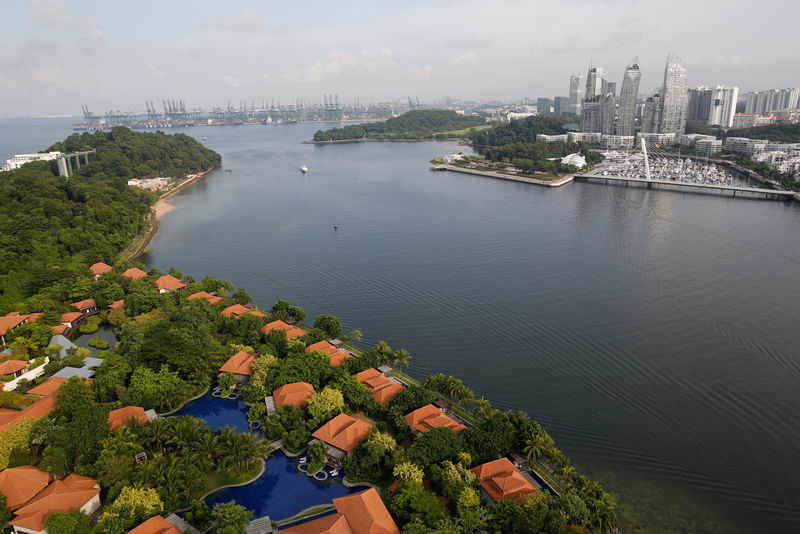By Ambar Warrick
Investing.com -- Singapore inflation eased more than expected in October thanks to fewer supply chain issues and cooling commodity prices, but the country still expects economic growth to slow in 2023 due to increasing global headwinds.
Singapore’s core consumer price index - the preferred inflation gauge of the Monetary Authority (MAS), grew 5.1% in October, lower than expectations of 5.3%, as well as September’s reading, data showed on Wednesday.
Including items such as private transportation and accommodation costs, overall inflation grew 6.7% in October, well below estimates of 7.1% and last month’s reading of 7.5%.
The cooling price pressures indicate that monetary tightening measures undertaken by the MAS this year are now bearing fruit. Easing supply chain issues and stabler commodity markets also helped bring down price pressures in the island state.
Still, inflation remains relatively elevated, with the MAS forecasting that high labor costs and persistent supply shortfalls will keep inflation high in the near-term. The MAS maintained its 2022 outlook for core and overall inflation at 3.5% to 4.5% and 5.5% to 6.5%, respectively, although it had hiked its forecast in September.
But Singapore’s economic outlook appears to have deteriorated further. The Ministry of Trade and Industry (MTI) said in a separate announcement the island state’s gross domestic product is expected to rise by 0.5% to 2.5% in 2023, down substantially from the 3.5% growth forecast for 2022.
The MTI also said that GDP grew 4.1% in the third quarter, lower than the government’s advance estimate, while the 3.5% forecast for 2022 was narrowed slightly from an earlier range of 3% to 4%.
The dour forecast comes amid heightened inflationary pressures this year, as well as weakening global demand for the island state’s major electronics and industrial exports.
Singapore’s non-oil exports, a key driver of economic growth, fell sharply this year amid weakening demand, especially in major trading partner China.
The economy was also pressured by tightening monetary conditions, with the MAS tightening policy for the fifth time in 12 months in October.
The Singapore dollar reacted negatively to the CPI and GDP data, deepening its losses slightly to trade 0.3% lower against the dollar.
